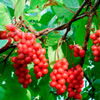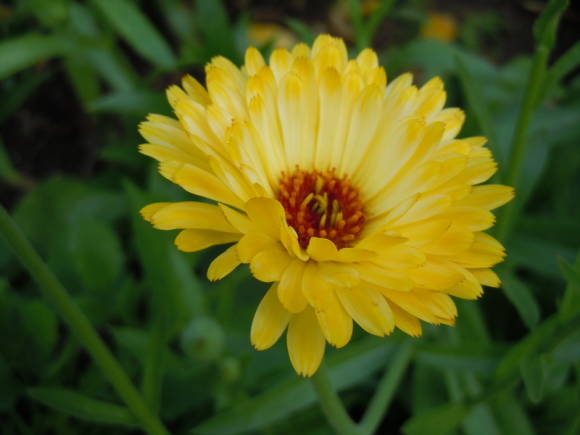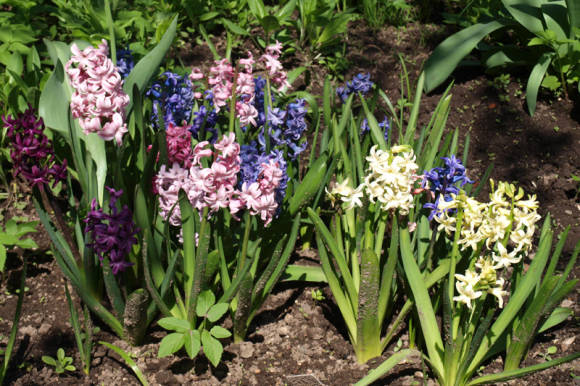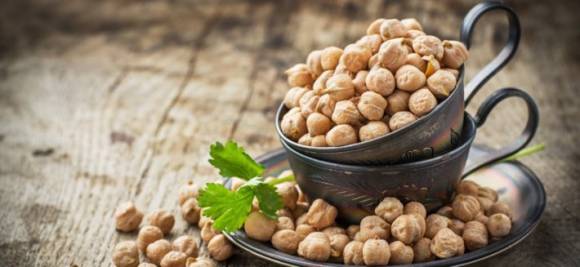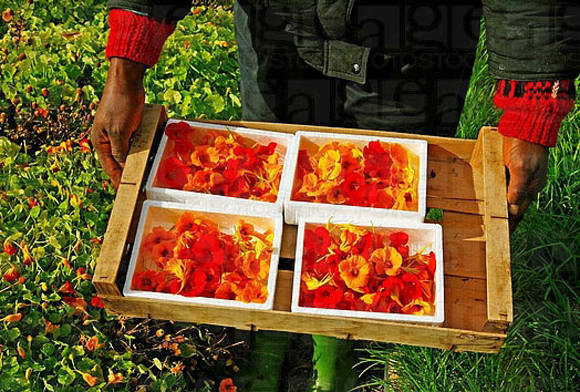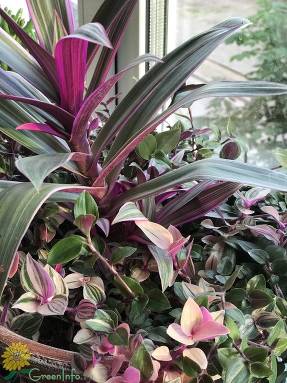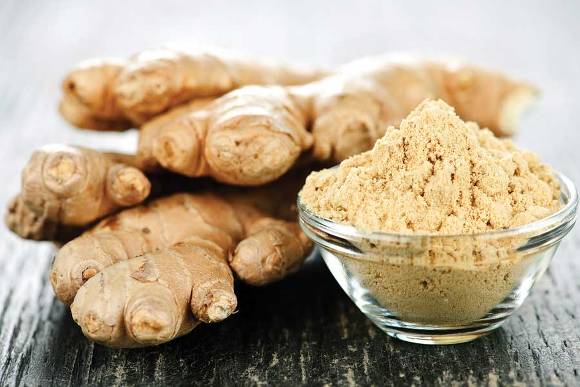
This spectacular climbing plant is more often associated with beer, especially after TV commercials. But without in any way detracting from its value for the food industry, it is worth remembering its wonderful medicinal properties.
In accordance with the medieval system of signatures (signs that the plant gives, for what diseases it is used), hops, being a climbing plant and being under the patronage of Mercury, affects the endocrine glands in the body. It combines elements of air and earth, so this plant is more effective not for men who love beer, but for women.
Medicinal raw material of ordinary hops (Humulus lupulus) are "cones", female inflorescences, which are collected when they become golden-green, elastic and, when rubbed, emit a strong specific odor, which not everyone likes. They are plucked together with the stalks - so they do not crumble when dried. It is also not recommended to collect cones with greatly enlarged and protruding scales: they contain a lot of seeds and little lupulin.
The collected raw materials are dried as quickly as possible, spreading out in a thin layer in the shade or in the attic. You cannot dry them in a hot dryer, while the essential oil, which is one of the most important active substances of this plant, begins to evaporate.
In addition to cones, the raw material is the so-called lupulin - glands that are shaken off from the cones. Lupulin contains 50-80% of bitter resins (acyl phloroglucid, hop bitter acids humulon, lupulon and other acyl phloroglucide derivatives and products of its oxidation), 1-3% of essential oils, bitterness and tannins. Depending on the prevalence of myrcene or humulene, the varieties are subdivided according to the composition of the oil and, accordingly, according to the aroma. Varieties with a high humulene content have the most delicate aroma.
There are 5 quality groups of brewing hops: fine aromatic, aromatic, bitter-aromatic, bitter and highly resinous. Russian hop varieties: Druzhny, Krylatsky, Mikhailovsky, Podvyazny, Sumer, Favorite, Flagman, Tsivilsky. German varieties of fine aromatic and aromatic group: Hallertauer Mittelfrüher, Hersbrucker Spät, Spalter, Tettnanger, Hallertauer Tradition, Perle, Spalter Select, Saphir, Opal, Smaragd, Pride of Ringwood. Czech varieties: red Zhatetsky, - Roudnitsky, Ushtetsky, Dubsky, Trshitsky. The bitter and bitter-aromatic group includes the varieties Northern Brewer, Nugget, Target, Hallertauer Magnum, Hallertauer Taurus, Hallertauer Merkur, Herkules.
During storage, the composition of the hops changes. The essential oil is significantly reduced, and the content of volatile 2-methyl-3-buten-2-ol formed during storage can reach 0.15%. It is a product of autooxidative decomposition of bitterness. This is a very important problem for brewing. Therefore, the raw materials are quickly dried at a temperature of + 65 ° C and processed quickly. Even with proper storage, quality is lost quite quickly, and nowadays, brewing with ethanol or CO is often used.2 extracts. The tasks of hops in brewing are as follows - to impart a characteristic bitter taste, a characteristic aroma appears and, finally, the beer can be stored, since bitter acids inhibit gram-positive microorganisms.

Hop cones contain resinous substances (15-30% lupulin), 0.3-1.0% essential oil containing more than 200 components with mono- and sesquiterpenes (myrcene, humulene, caryophyllene, farnesene, linalool, geraniol, formic esters, acetic , butyric, octyl and nonylic acids), bitter substances - derivatives of protocyanidins (2-4%), flavonoids (kaempferol, quercetin, mono- and diglycosides, as well as hop-specific chalconxanthohumol, organic acids (valeric), essential oil, alkaloids, tannins In hop cones, choline, asparagine, triterpene compounds, vitamins (rutin, C, E, B1, B3, B6, H and PP) are also found.During the formation period, cones contain 61.2–63.5 mg% (of the mass of fresh raw materials) ascorbic acid, including 15.7–27.9 mg% of its reduced form. The hop contains 20–70 mg% tocopherols (vitamin E), including 10–55 mg% α-tocopherol. However, hops are mainly used in the form of decoctions, infusions and tinctures, and tocopherol is a fat-soluble substance, therefore, in most cases, it is not involved in the therapeutic effect. (Only one of the books contained a recipe for an oil infusion that should contain vitamin E).
Given such a diverse composition, hops have an extensive list of pharmacological properties. First of all, it has a calming effect on the nervous system. Humulin and essential oil are part of complex preparations Valocordin, Valoserdin and some others. Infusion of "cones" is used mainly as a sedative for insomnia (it is assumed that it activates melatonin receptors), anxiety, as an anticonvulsant, with vegetative-vascular dystonia, as well as the recent adversity of business people - "manager's syndrome", which accompanies the above symptoms. It is used in combination with hawthorn, lemon balm and sage for climacteric disorders in women. In combination with hypnotics and sedatives, it enhances their effect. In addition, in some publications there is an opinion that hops weakens attention and worsens the reaction, due to which it is not recommended to take it before getting behind the wheel.
For cooking infusionhop cones take 2 tablespoons of raw materials, pour 0.5 liters of boiling water, leave for 2 hours, filter and take ½ cup 2-3 times a day.
Or decoction of hop cones in milk: simmer 2 tablespoons of hop cones for a couple of minutes in 200 ml of milk, let it brew under the lid for 7 minutes, strain, sweeten with a spoonful of honey and take at night as a soothing.
Hop cone tincture prepared with 40% alcohol or vodka in a ratio of 1: 4. Take 10-15 drops in the morning and evening.
For some, hop pads are sufficient as a sedative. Several handfuls of raw materials are placed in the pillowcase. When the head is moved over the pillow, an essential oil is released, which has a soothing effect. The British have been using this tool for several centuries. Such pads were in high esteem, for example, by King George III. However, the hops in the cushion need to be changed periodically to maintain their effectiveness. May be supplemented with the soothing effect of lavender flowers. Even more exotic soothing pillow mixes contain orange blossom, lemon balm leaf, lavender, dill seeds, chamomile flowers, hops. They can be used by children and adolescents in the absence of allergies.
And in finished dosage forms, hop extract is combined with lemon balm and valerian. But despite the modern development of science and analytical methods, it was not possible to fully figure out what explains the rather high sedative effect of hops. All substances separately, including 2 methyl-3-buten-2-ol formed during storage and already in the body, do not have a strong sedative effect.
Due to the content of phenolic compounds (chalcones, flavonoids and protocyanidins), hops have a high antioxidant potential. Especially chalcones (xanthohumol and its derivatives) show in experiments both in vitro and in vivo, a wide range of mechanisms of suppression of various phases of carcinogenesis.
The strong estrogenic activity of hops has been scientifically established, i.e. it has an effect similar to female sex hormones. The hormonal effects of hops have been noticed for a long time. In those areas where hops were grown, during the harvest period, the harvesters had their periods earlier and the cycle was broken. This disorder is called the hop gatherer's disease, and it is associated with the content of estrogen-like substances that enter the body when collecting fresh cones.Thus, hops stimulate female sexuality and suppress male sexuality. And that is why men, when they abuse beer with hops, begin to gain weight as a female and even learn what cellulite is. No wonder the great O. Bismarck said that beer makes a person fat and lazy.
Therefore, it is used for dysfunctions and climacteric disorders, to reduce lactation (milk production).
With female infertility mix ready-made alcoholic tinctures of hops, medicinal sage and elecampane in a ratio of 1: 2: 2 and take 20 drops 3 times a day 2 hours after meals. The course is 6-12 months. At least two of these plants - hops and sage - have a strong estrogenic effect and stimulate the onset of ovulation.
You've probably heard that beer strengthens hair, makes it stronger and stops hair loss. It is also primarily due to its estrogenic properties. There are even recipes for baldness for men with hops. Here is an example of a firming shampoo: 200 ml of beer, 1 yolk, 3-4 drops of rosemary essential oil (also has a strong estrogenic effect), a decoction of boxwood leaves (1 tablespoon per 200 ml of water), 1-2 tablespoons of apple cider vinegar. Mix beer with yolk, add rosemary essential oil and boxwood broth. Apply this mixture to hair and rub in thoroughly. Then rinse with plenty of water and rinse with apple cider vinegar diluted in ½ liter of water.
The anti-sclerotic effect of this plant is also associated with the hormonal effect. As shown by research scientists, the presence of female hormones in the body prevents the formation and accumulation of "bad cholesterol".
With atherosclerosis Boil 30 g of hop cones for 3 minutes in 1 liter of water, after cooling, take 150 ml - 4-6 times a day. Probably, sulfur-containing volatile compounds are also involved, which also have an anti-sclerotic effect.
Revealed a diuretic effect and a good effect on urate stones. In addition, hops relieve cramping, which is important for kidney stones. The infusion helps with irritation of the bladder, inflammation of the kidneys. Sometimes hop preparations are effective for bedwetting.
Thanks to the bitterness, hops stimulate appetite and stimulate digestion. Combined with its calming effect, these properties make it indispensable for stress-related digestive disorders.
Hop aperitif and tonic in the absence of appetite and asthenic conditions - pour 50 g of hop cones with 1 liter of good white wine, leave for 12 days in a cool dark place in a well-sealed bottle. Take 50 g before meals.
In folk medicine, hops are used more widely. Infusion of immature seedlings is prescribed for thrombophlebitis, tuberculosis of the lungs and skin, malaria, syphilis and as an anthelmintic agent. It is used externally for acne and, as mentioned above, to strengthen the hair. In this case, the infusion is made more concentrated.
In the form of baths, hop stems are effective against high blood pressure and atherosclerosis. There is information in the scientific literature about the oncoprotective effect of this plant, but this issue is currently under study and it is still far from any recommendations.
In case of an overdose of hop preparations, nausea, vomiting, abdominal pain, headache, feeling of fatigue and weakness are possible. In addition, drowsiness, headache, conjunctivitis, and dermatitis can occur when harvesting and drying fresh hops.
In homeopathy fresh, slightly unripe buds are used as raw materials for insomnia and nervousness. For the same problems, lupulin is also used, but obtained from dry buds.
Hops have long been used in brewing and baking, as well as in the production of many cosmetics.
Soups and cabbage soup are prepared from young hop shoots; they taste like asparagus.It is believed that, unlike buds, shoots make a person more energetic and active.
And in old libraries in Europe, hops were laid out to regulate humidity and repel storage pests. It had to be replaced every 2 years.
About growing hops - on the page Hop.
